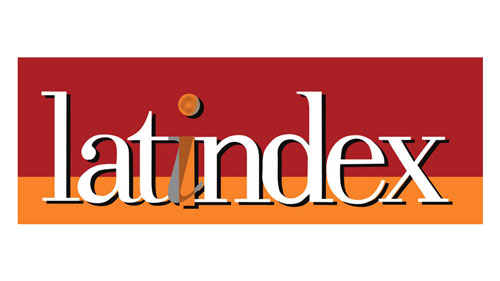Hesitation patterns in the spontaneous speech of Hungarian learners of Spanish: the influence of immersion in the target country
DOI:
https://doi.org/10.26512/rhla.v19i1.26945Keywords:
hesitación, pausas sonoras, alargamiento, transferencia negativa, nivel umbralAbstract
According to previous research (BADITZNÉ, 2019c), when listening to the spontaneous speech of Hungarian students of Spanish at threshold level (B1 of CEFR), one of the aspects that native Spanish speakers least tolerated was the way in which Hungarians hesitated in Spanish, therefore in this study we are focusing mainly on disfluency phenomena such as filled pauses and lengthenings, which are frequent hesitation devices. In the investigation we will first focus on the hesitation patterns employed by 20 Hungarian students of Spanish: a group of 10 students who have not yet lived in Spain, and another of 10 students who all have spent some time in the target country, and then we contrast their hesitation patterns with those employed by 25 native Spanish speakers. As expected, the stay in Spain positively influenced certain aspects of the acquisition of native hesitation schemes, for example, the overall duration of disfluency phenomena decreased considerably, but the vocalic timbre of filled pauses still seems to be a challenging area of negative transfer.
Downloads
References
AUSZMANN, A. Magyar gyermekek magánhangzóinak akusztikai-fonetikai jellemzÅ‘i. Beszéd. Kutatás. Alkalmazás. Eötvös Loránd Tudományegyetem: Eötvös Kiadó, 2018.
BADITZNÉ PÁLVÖLGYI, K. Hesitation patterns in the Spanish Spontaneous Speech of Hungarian learners of Spanish. In: ROSE, R. L; EKLUND, R. (Eds.) Proceedings of DiSS 2019, 12”“14 September 2019, Eötvös Loránd University, Budapest, Hungary, 2019a, p. 35-38.
BADITZNÉ PÁLVÖLGYI, K. A hezitálás mintázatai küszöbszinten álló magyar ajkú nyelvtanulók spontán beszédprodukciójában. Alkalmazott Nyelvtudomány 19:2, 2019b, p. 1-14.
BADITZNÉ PÁLVÖLGYI, K. Magyar ajkú spanyol nyelvtanulók kiejtése spanyol anyanyelvűek szemével. XXVII. Magyar Alkalmazott Nyelvészeti Kongresszus. Nyelv, kultúra, identitás. Alkalmazott nyelvészeti kutatások a 21. századi információs térben. KRE, Budapest, 2019c. április 15-16. Absztraktfüzet. p. 44.
BELZ, M. et al. Fluently disfluent? Pauses and repairs of advanced learners and native speakers of German. International Journal of Learner Corpus Research 3:2, 2017, p. 118-148.
BERRY, A. Spanish and American turn-taking styles. In: Pragmatic and Language Learning. Monograph Series, Volume 5, 1994, p. 180-190.
BOERSMA, P.;WEENINK, D. Praat. Doing phonetics by computer. Version 6.0.49, 2019.
CANTERO SERENA, F. J. Análisis prosódico del habla: más allá de la melodía, In: ÁLVAREZ SILVA, M. R.; MUÑOZ ALVARADO, A.; RUIZ MIYARES, L. (Eds.): Comunicación Social: Lingüística, Medios Masivos, Arte, Etnología, Folclor y otras ciencias afines. Volumen II. Santiago de Cuba: Ediciones Centro de Lingüística Aplicada, 2019, p. 485”“498.
GARRIDO ALMIÑANA, J. M.; LAPLAZA, Y.; GARCÃA, C. L. 2017. La caracterización pragmática y prosódica de la vocalización “mmm” en español. In: MARRERO AGUIAR, V.; ESTEBAS VILAPLANA, E. (Eds.): Tendencias actuales en fonética experimental: Cruce de disciplinas en el centenario del Manual de Pronunciación Española (Tomás Navarro Tomás), Madrid: Uned, 2017, p. 125”“129.
GARCÃA-AMAYA, L. A longitudinal study of filled pauses and silent pauses in second language speech. In: EKLUND, R. (Ed.) Papers presented at Diss 2015. Queen Margaret University, Edinburgh, 2015, p. 23-27.
GÓSY, M. A megakadásjelenségek eredete a spontán beszédtervezés folyamatában. Magyar NyelvÅ‘r 126, 2002. p. 192”“204.
HORVÁTH, V. Hezitációs jelenségek a Magyar beszédben. Beszéd. Kutatás. Alkalmazás. Eötvös Loránd Tudományegyetem: Eötvös Kiadó, 2014.
MACHUCA, M. J.; LLISTERRI, J.; RÃOS, A. Las pausas sonoras y los alargamientos en español. Unestudiopreliminar. Revista Normas, 5, 2015, p. 81-96.
MEDGYES, P. When the teacher is a non-native speaker. Teaching pronunciation, 2001, p. 429”“442.
NEUBERGER, T. A spontán beszéd sajátosságai gyermekkorban. Beszéd. Kutatás. Alkalmazás. Eötvös Loránd Tudományegyetem: Eötvös Kiadó, 2014.
RIEGER, C. L. Disfluencies and hesitation strategies in oral L2 tests. Proceedings of DiSS’03, Disfluency in Spontaneous Speech Workshop, 5”“8 September 2003, Göteborg University, Sweden. Robert EKLUND (Ed.), Gothenburg Papers in Theoretical Linguistics n. 90, 2003. p. 41”“44.
RUTGER BOSKER, H. et al. Both native and non-native disfluencies trigger listeners’ attention. In: EKLUND, R. (Ed.) Papers presented at Diss 2015. Queen Margaret University: Edinburgh, 2015. p. 5-8.
Downloads
Published
How to Cite
Issue
Section
License
Copyright (c) 2020 Revista Horizontes de Linguistica Aplicada

This work is licensed under a Creative Commons Attribution-NonCommercial-NoDerivatives 4.0 International License.
Articles published by the Journal Horizontes de Linguística Aplicada are licensed under a Creative Commons Attribution-NonCommercial-NoDerivatives 4.0 International License.
By publishing in Horizontes de Linguística Aplicada, authors agree to the transfer of economic copyright to the journal. Authors retain their moral rights, including the right to be recognized as the creators of the work.
Authors and readers are free to:
Share — copy and redistribute the material in any medium or format
Under the following terms:
- Attribution — You must give appropriate credit , provide a link to the license, and indicate if changes were made . You may do so in any reasonable manner, but not in any way that suggests the licensor endorses you or your use.
- NonCommercial — You may not use the material for commercial purposes .
- NoDerivatives — If you remix, transform, or build upon the material, you may not distribute the modified material.
- No additional restrictions — You may not apply legal terms or technological measures that legally restrict others from doing anything the license permits.





